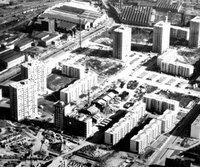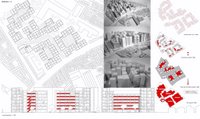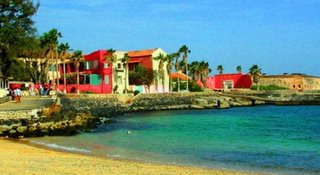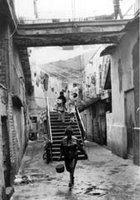[ Yâsimîn VAUTOR yasimin@ifrance.com ]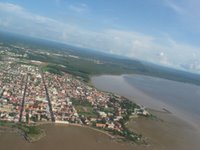
Cayenne island is bordered in the north and west by Atlantic Ocean and Cayenne River, in the South by the « mangrove ». The urban pattern imported by the colonisation and based on grid an iron pattern of development and is clearly visible : streets work as strutural elements.
All administrative buildings exist in the western part of the city centre architecturally imitating a powerful image. The rest of the centre comprises of essentially individual houses and low rise rented apartments. Green spaces in the centre of some plots can be easily seen. The traditional real estate development still exists as one of the important feature of development which comprises of today 50.600 people in the city of Cayenne.
Cayenne is seen as a quite insecure place and also problems of insalubrity affects its buildings. That´why the city is left out by high class population, as it is seen not enough attractive and reflects a negative image. Since heritage is not taken care, the layer of traditional architecture is degrating.
The city centre doesn´t promote the affordable facilities in terms of comfort in the rented flats. Insalubrity is in force, affects buildings and is renforced by the absence of amenities and the non respect of security and maintainance norms.
The other critical problems faced are related to an illegal occupancy in the centre of the plots.
The illegal and uncontrol increase of land seems to be the response to the high housing demand in the city centre, without taking care of population.
Capital of the only one europeen country in South America, Cayenne welcomes an important mass of migrating population coming from mostly surronding developing countries.(Surinam, Haiti, Bresil,...)
Since the city centre fails to provide affordable housing, the illegal development increases tremendously the ´´precarisation´´. Also owners take advantage of the situation. They offer against a rent an affordable accomodation, but which is a completely illegal and insecure construction on the reserved percentage of land of the plot they own.
In this context, the access to an affordable accomodation with basic amenities has become an important issue. It´s taking up by urban policies on revitalization of historic centres. My work focuses on helping the traditional population in the city centre and trying to protect the culture of the place, which represents a major part of its identity. My interest goes beyond the question of the image of the centre, as it aims to propose appropriate answers to ensure housing access for the city centre population of Cayenne.


